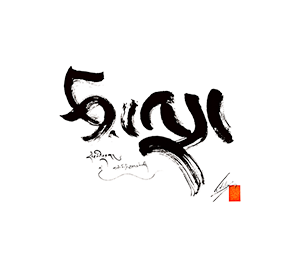Klaus-Dieter Mathes: Tibetan Traditions of Buddha-Nature in the Light of Its Complex Indian Background
< Media
Abstract from the Author
Already in the early Tathāgatagarbhasūtras we find, besides the dominant idea of a permanent, fully grown buddha within, occasional explanations of buddha nature in the sense of tathāgata embryos. This idea that sentient beings are not buddhas yet, but only have the potential to become ones, prepared the ground for the Indian Buddhist mainstream to bring the controversial doctrine of a permanent, ātman-like buddha nature in line with Mahāyāna Buddhism. While the standard treatise on buddha nature, the Ratnagotravibhāga, represents a systematic Yogācāra interpretation of the Tathāgatagarbhasūtras, the Laṅkāvatārasūtra can be interpreted as aimed at bringing the concept of buddha nature in line with Madhyamaka. Moreover, the end of the Ratnagotravibhāga's first chapter (RGV I.156-157) lends support to those who would simply classify the controversial doctrine as a teaching of provisional meaning (neyārtha) and thereby avoid the trouble of reinterpreting the numerous technical details of a whole system.
It will be shown that all possible combinations of these doctrinal elements can in fact be identified in the complex Tibetan intellectual landscape.About the video
| Featuring | Klaus-Dieter Mathes |
|---|---|
| Creator | Tsadra Foundation |
| Director | Perman, M. |
| Producer | Tsadra Foundation |
| Event | Old Topic, New Insights: Buddha-Nature at the Crossroads between Doctrine and Practice (, Prague) |
| Related Website | Buddha-Nature |
| Citation | Mathes, Klaus-Dieter. "Tibetan Traditions of Buddha-Nature in the Light of Its Complex Indian Background." Old Topic, New Insights: Buddha-Nature at the Crossroads between Doctrine and Practice. The 16th IATS Conference, Prague, July 3–9, 2022. Produced by the Tsadra Foundation Research Department. Video, 20:27. https://www.youtube.com/watch?v=VT6-yMGKrdA. |
